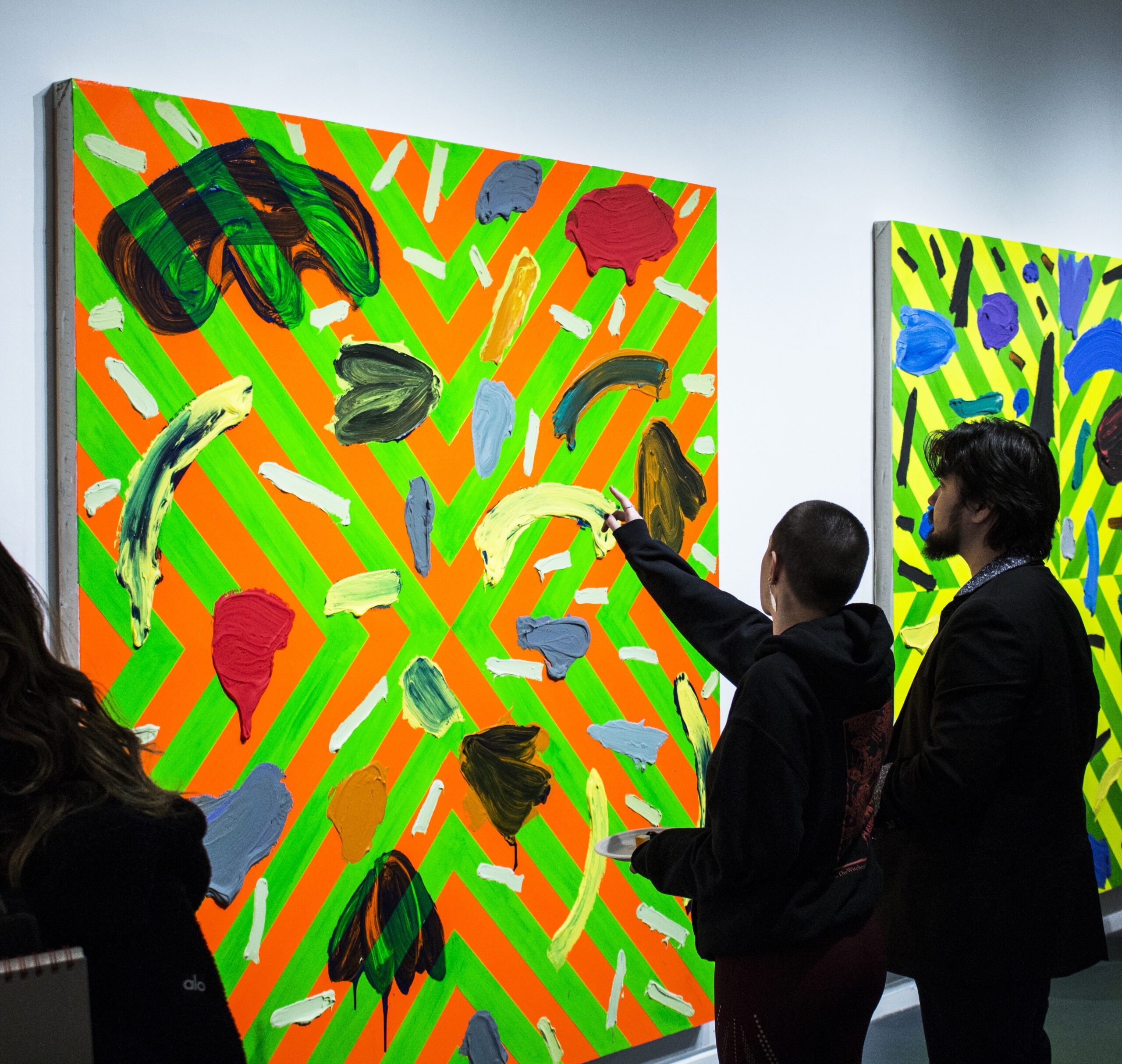Big Painting Art Gallery: The combined works of James Sundquist, Toby Sisson and Yann Weiner, entitled “Big Painting, are currently on display in the URI Fine Arts Center until March 3. Photos by James McIntosh.
The University Rhode Island’s Fine Arts Center opened a new exhibit, entitled “Big Painting.” The exhibit, which first opened its doors on Jan. 29, was completed by artists James Sundquist, Toby Sisson and Yann Weiner.
Contrary to its title, “Big Painting” is composed of 15 individual works of art. Additionally, only eight pieces actually include paint; some of the art displayed involves either wood or plywood.
All of the art, however, has the same aim to “celebrate the process, evocation and large scale of painting,” according to URI’s website.
Additionally, the artists state there that they “bring an intersectional narrative to the gallery inspired by formal aesthetic concerns enhanced by the juxtaposition of the social constructs within.”
James Montford, the curator of the exhibit, said that the reasoning behind the exhibit’s name was figurative rather than literal.
“We have work that is not only large in terms of its physical stature, but it was also large in terms of concept, which is one of the criteria that is so important to how I thought the exhibit should unfold,” Montford said.
Montford also explained that getting the true meaning of a piece of art can take time.
“It might not be overly apparent to you the first walk through, but after you come through it a second time, or maybe the first time, you start to wonder ‘What is the meaning behind this work?’ Montford saud.
The three artists each have their own unique style, which shines through in their art and makes every bit of the exhibit different.
Sundquist, whose paintings are shown first in the exhibit, relies on bright colors to immediately grab the attention of visitors. His first five works “Working Zone 5,” “Working Zone 4,” “Working Zone 7,” “Working Zone 6” and “Working Zone 3” are all very similar, but each has enough nuance to it to mark it as their own unique pieces.
Sundquist’s final piece, “Deconstructed American 1-4,” is dramatically different than his first five exhibits. Unlike his other pieces, which stick out due to their colors, this one sticks out due to its monochrome nature and its completely black background. It is constructed differently than any of his other works as well; instead of being polymer and paint on canvas, it’s “encaustic monotype” on paper mounted on wood. Within the painting is what can appears to be split-up letters.
Sisson’s pieces can best be described as compounds. His first four exhibits ,“Totems #1-4,” are all grouped together similarly to a singular exhibit. The titular totems, which are graphite on a wood background, alternate directions and increase in number for each piece of work. Sisson’s final exhibit, “Dark Moons 1-16,” is a compound work as well, composed of 16 smaller sketches of moons that are combined into one exhibit. It’s also the only part of the exhibit that is framed.
Weiner ends the exhibit with his own unique style. At first glance, “Portrait 13,” “Portrait 12” and “Portrait 9” all look as if they were constructed in different shades of brown to portray human faces in a monochrome, faded manner. Upon closer examination, however, it becomes clear that these portraits are actually made out of rusted metals nailed onto plywood.
Like the other artists, Weiner’s other work of art, “Static 5,” is constructed differently than his other pieces. Unlike his other works, there’s no image created within the piece. However, it has more of a three-dimensionality to it than any other piece in the gallery.
“Big Painting” will be on display until March 3 in the Fine Arts Center.




